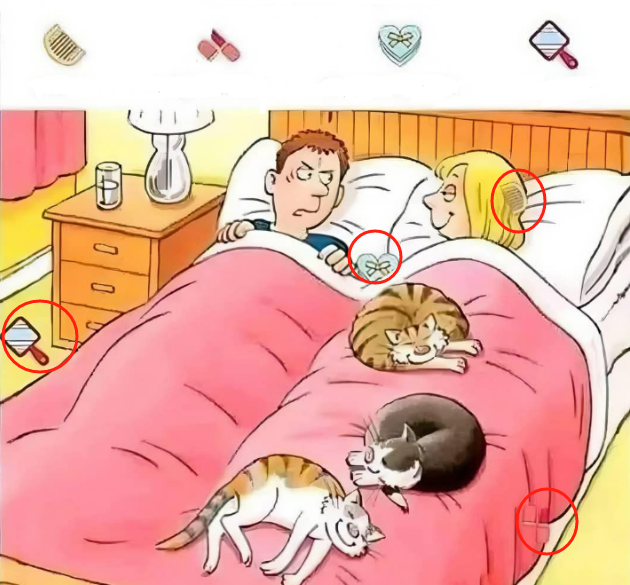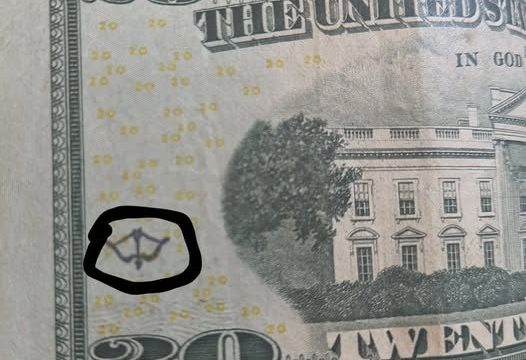Hidden object puzzles are an entertaining and brain-stimulating way to challenge your perception and observation skills, and today’s black-and-white illustration offers just that kind of mental workout. At first glance, the image appears simple, perhaps even ordinary, but look again—cleverly tucked within this drawing are four everyday items that have been artfully disguised. The goal is straightforward yet surprisingly tricky: find all four hidden objects.

It sounds easy enough, but don’t be fooled—these items are camouflaged so well that spotting them takes concentration, patience, and a keen eye for detail. The key to solving a hidden object puzzle like this lies in your ability to truly slow down and look at the picture with intention. We’re so used to glancing at images quickly that our brains tend to fill in the blanks and overlook subtle inconsistencies. To counter this, try approaching the puzzle methodically.
Divide the image into smaller sections and analyze each part one at a time. Look for shapes that don’t quite belong, lines that seem too perfect or too odd for the scene, and patterns that might resemble something familiar. Rotating the image or stepping back from your screen can offer a fresh perspective and may help you notice what you initially missed. Hidden object puzzles like this are more than just games; they’re an opportunity to improve your focus, visual recognition, and problem-solving skills. They train your brain to recognize the unexpected and force you to think differently.
While some people may spot the first item quickly, others might find it more challenging—and that’s okay. There’s no timer, no rush, and certainly no pressure to get everything right on the first try. This is the kind of challenge that rewards persistence and attention to detail. One of the most satisfying parts of puzzles like this is the moment when you suddenly spot one of the hidden objects. It might be a fork embedded into the pattern of a tree branch or a shoe cleverly blended into a swirl of shading. These “aha!” moments are exciting and motivating, and once you find the first item, it often becomes easier to recognize the others. Your brain starts tuning into the artist’s style of camouflage and picks up on the visual clues more efficiently.
If you find yourself getting stuck, don’t give up. Take a moment to rest your eyes, then come back and view the image from a new angle. Changing your environment or lighting can also help; sometimes, just slightly adjusting how you look at the picture can make a big difference. You might even invite a friend or family member to join in and turn it into a fun, collaborative experience—different people notice different things, and teamwork can often reveal what one person alone might miss. It’s also worth noting that engaging in hidden object puzzles regularly can help strengthen cognitive functions like visual memory and concentration. That’s part of what makes them so appealing to both kids and adults.

They’re enjoyable, challenging, and beneficial all at the same time. Plus, the black-and-white format adds another layer of difficulty because you can’t rely on color to identify out-of-place elements, which makes each discovery even more rewarding. So if you’re looking for a screen-time activity that stimulates your brain without feeling like work, this puzzle is a great choice. It’s quiet, creative, and doesn’t require any special tools or instructions. Just you, your eyes, and a bit of curiosity. Whether you find all four hidden items right away or it takes a few rounds of searching, the experience itself is what counts. These puzzles encourage mindfulness and can even be a relaxing way to unwind at the end of the day. Remember, there are no spoilers here—just the challenge, your focus, and the joy of discovery. So take your time, enjoy the process, and see if you can track down all four hidden objects hiding in plain sight. You just might surprise yourself with what you find when you really start to look.





